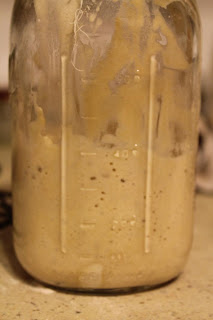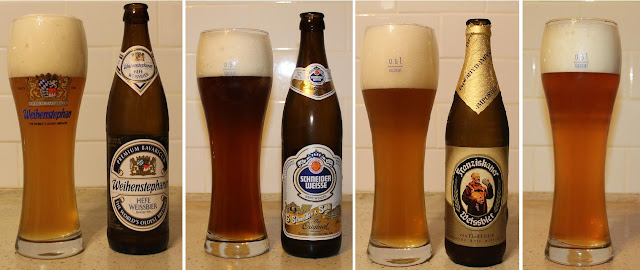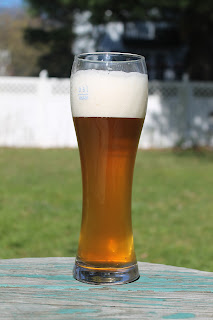Millions of years ago, the galactic Mayan empire foretold the end of the world. But how will it come? Will it be impact with a comet, zombie apocalypse, death star or Volgon construction crew? No! it comes to you in a convenient 12 oz bottle!
I present to you End of the World Stout - a beer brewed to ridiculous strength (20% abv) flavored with chocolate and aged on oak.
I made this monster brew almost one year ago. Update After aging for a few months on oak and chocolate, I force carbonated and bottled. It has been sitting, waiting for this day...
The bottle opens with a hiss to remind me the carbonation transferred over ok. I was a little worried since this was force carbonated in the keg and I don't have any of that fancy bottling equipment.
It pours deep black with only a hint of head that leaves a ring around the top.
Sweet aroma of dark malt with a hint of chocolate backed up with a whiff of alcohol. Maybe a little bit of roasted in the aroma too, but you have to look for it.
Strong malt favors right up front along with a slight alcohol burn. The alcohol is actually quite mild considering it is around 20%. The malt/alcohol is followed by velvety chocolate, which lingers long after you have swallowed. Sadly, I can't find the oak, but maybe it's there helping the favors blend together. I guess a beer this strong needs more than an ounce. It could also be that the oak cubes were buried in layers of yeast that settled out in secondary.
The feel is a bit thick, but not syrupy or sticky. The carbonation it does have helps lighten it up a bit. It finishes with a slight alcohol burn and that chocolate.
This beer is more like a chocolate liquor than your average ale/stout/etc. something to keep you company after the world has ended. Enough of these and you won't even remember the comet strike or the wave of incoming zombies!
Notes:
12/28/11 - Brewed OG=1.10
Made 2x 1/2 gal WLP099 starters
Started with Nottingham yeast
1/1-1/8 - Added 7.# corn sugar added some 099 and yeast nutrient
1/9/12 - Final sugar addition. vOG=1.074
1/10/12 - + 1 Vanilla bean (Vodka soaked) + 2oz Coco Nubs
BR=19.2 G=1.04 ABV=14-19%
1/16-1/17 added 1# cane Sugar vOG=1.182
1/19/12 - Secondary Got ~4.5 gals - 1 gal of sludge! G=1.029 ABV=20%
5/29/12 - Keg + Fridge (To force carb) FG=1.023, 19brix ABV=20-21%
Based on current brix+SG, OG could be 1.169, putting ABV at 19.5%
8/23/12 - Bottled 1.5 cases
12/20/12 - This tasting!
Made 2x 1/2 gal WLP099 starters
Started with Nottingham yeast
1/1-1/8 - Added 7.# corn sugar added some 099 and yeast nutrient
1/9/12 - Final sugar addition. vOG=1.074
1/10/12 - + 1 Vanilla bean (Vodka soaked) + 2oz Coco Nubs
BR=19.2 G=1.04 ABV=14-19%
1/16-1/17 added 1# cane Sugar vOG=1.182
1/19/12 - Secondary Got ~4.5 gals - 1 gal of sludge! G=1.029 ABV=20%
5/29/12 - Keg + Fridge (To force carb) FG=1.023, 19brix ABV=20-21%
Based on current brix+SG, OG could be 1.169, putting ABV at 19.5%
8/23/12 - Bottled 1.5 cases
12/20/12 - This tasting!


































